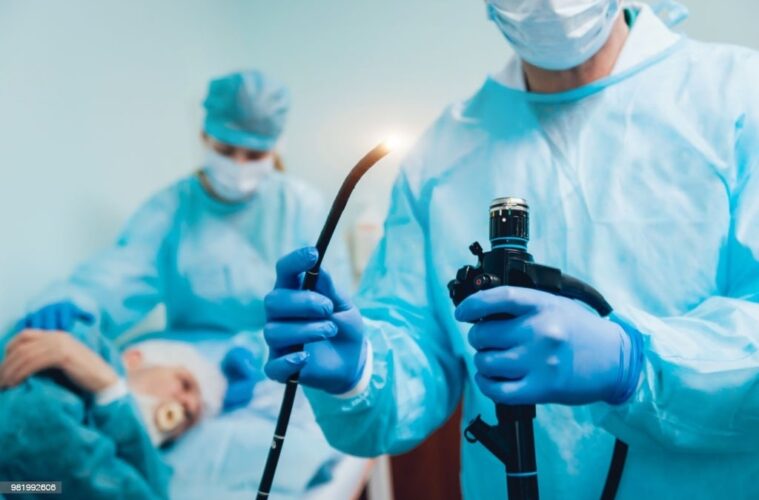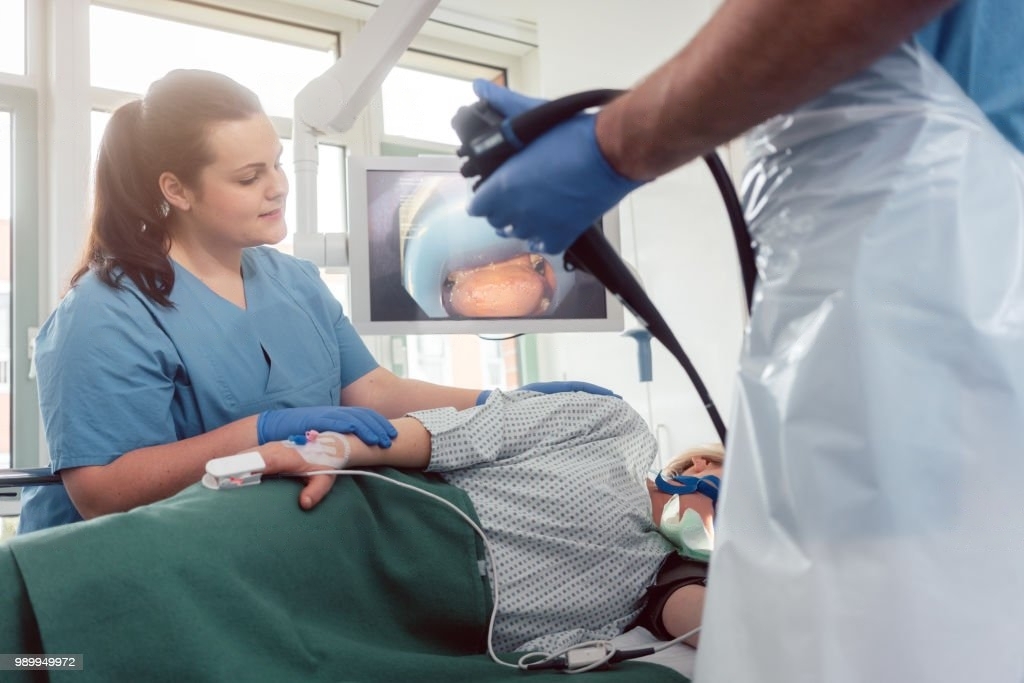Endoscopy is a common procedure used to diagnose and treat various medical conditions. While it is an effective tool for detecting and treating health issues, it can also be expensive. Understanding the cost of endoscopy with insurance is important for patients to make informed decisions about their healthcare.
There are several factors that can impact the cost of endoscopy, including the location of the procedure, the type of endoscopy, and the patient’s insurance coverage. Health insurance plays a critical role in determining the cost of endoscopy, as it can cover some or all of the expenses associated with the procedure. However, patients must understand their insurance policy and coverage limits to avoid unexpected costs.
Key Takeaways:
- Understanding the cost of endoscopy with insurance is important for patients to make informed decisions about their healthcare.
- Health insurance plays a critical role in determining the cost of endoscopy, but patients must understand their policy and coverage limits to avoid unexpected costs.
- Factors such as the location of the procedure, the type of endoscopy, and the patient’s insurance coverage can impact the cost of endoscopy.
Understanding Endoscopy
Endoscopy is a medical procedure that uses a small camera to diagnose and treat problems in the upper digestive tract and small intestine. During the procedure, a gastroenterologist inserts a thin, flexible tube with a small camera on the end into the patient’s mouth and down into the digestive tract.
The camera on the end of the tube allows the gastroenterologist to see inside the digestive tract and diagnose any problems that may be present. Endoscopy is often used to diagnose conditions such as ulcers, inflammation, and cancer in the digestive tract.
Endoscopy is typically performed on an outpatient basis and is considered a safe and effective procedure. The procedure itself usually takes between 30 minutes to an hour, and patients are typically able to go home the same day.
When it comes to the cost of endoscopy with insurance, the cost can vary depending on a number of factors. Some insurance plans may cover the full cost of the procedure, while others may require the patient to pay a portion of the cost out of pocket.
Patients should check with their insurance provider to determine their coverage for endoscopy. It is also important to note that additional costs may be associated with the procedure, such as anesthesia or biopsies.
In summary, endoscopy is a common medical procedure that uses a small camera to diagnose and treat problems in the upper digestive tract and small intestine. Patients should check with their insurance provider to determine their coverage for the procedure and be aware of any additional costs that may be associated with it.
Why Endoscopy is Performed
Endoscopy is a medical procedure that involves the use of an endoscope, a flexible tube with a camera and light at the end, to examine the inside of the body. It is commonly used to diagnose and treat conditions of the digestive system, such as gastrointestinal (GI) bleeding, inflammatory bowel disease, hiatal hernia, reflux esophagitis, and gastritis.
Endoscopy is also used for cancer screening, particularly for colorectal cancer and rectal cancer. It can help detect early-stage cancer and precancerous growths, allowing for prompt treatment and better outcomes. Colonoscopy, a type of endoscopy, is the gold standard for colorectal cancer screening.
In addition to cancer screening, endoscopy is used to investigate various symptoms, such as abdominal pain, difficulty swallowing, and persistent nausea or vomiting. It can also help diagnose the cause of GI bleeding, which can be a sign of serious conditions such as colon cancer.
Overall, endoscopy is a valuable tool for diagnosing and treating a wide range of digestive system conditions. While the cost of endoscopy can vary depending on factors such as insurance coverage and the type of procedure performed, it is generally considered a safe and effective procedure with a low risk of complications.
Cost Factors of Endoscopy
Endoscopy is a medical procedure that involves the use of an endoscope, a flexible tube with a camera and light source, to examine the digestive tract. The cost of an endoscopy with insurance coverage can vary depending on several factors.
The national average cost of an endoscopy procedure is around $2,000, but this can vary significantly based on the type of endoscopy, the location, and the healthcare provider. Some factors that can affect the cost of an endoscopy with insurance include:
- Insurance coverage: Some insurance plans cover the cost of endoscopy procedures, while others may require patients to pay a portion of the cost out of pocket. Patients should check with their insurance provider to determine their coverage and any potential out-of-pocket costs.
- Type of endoscopy: There are several different types of endoscopy procedures, each with varying costs. For example, a colonoscopy may be more expensive than an upper endoscopy due to the additional preparation required.
- Location: The cost of an endoscopy can also vary depending on the location of the procedure. Endoscopies performed in a hospital may be more expensive than those performed in a medical office or outpatient center.
- Healthcare provider: The cost of an endoscopy can also vary depending on the healthcare provider performing the procedure. Patients should research different providers and compare costs to ensure they are receiving a fair price.
In conclusion, the cost of an endoscopy with insurance coverage can vary depending on several factors, including insurance coverage, type of endoscopy, location, and healthcare provider. Patients should research and compare costs to ensure they are receiving a fair price for their procedure.
Role of Health Insurance
Health insurance plays a crucial role in covering the cost of endoscopy procedures. Most insurance plans cover endoscopy as a necessary medical procedure, but the amount of coverage can vary depending on the type of insurance plan and the specific procedure.
Medicare, for example, covers endoscopy procedures under Medicare Part B, which covers outpatient medical services. Medicare Advantage plans also cover endoscopy procedures, but the amount of coverage can vary depending on the plan.
Private insurance companies also cover endoscopy procedures, but the amount of coverage can vary depending on the specific plan. Some insurance plans may require a copayment or deductible for endoscopy procedures, while others may cover the entire cost.
It’s important to check with your insurance provider to understand your coverage and any potential out-of-pocket costs associated with endoscopy procedures. In some cases, insurance companies may require pre-authorization before the procedure can be performed.
Overall, health insurance can help alleviate the financial burden of endoscopy procedures, making them more accessible to those who need them.
Outpatient vs. Inpatient Endoscopy
When it comes to endoscopy procedures, patients have the option of choosing between an outpatient or inpatient facility. Outpatient endoscopy is typically performed at a surgery center or clinic, while inpatient endoscopy is performed at a hospital.
Outpatient endoscopy is generally less expensive than inpatient endoscopy, as the facility fees are lower. However, the cost of the procedure itself may be higher due to the use of more advanced equipment or a longer procedure time. Additionally, outpatient endoscopy may not be covered by insurance if it is considered an elective procedure.
Inpatient endoscopy, on the other hand, is typically covered by insurance and may be necessary for patients with more complex medical conditions. Inpatient facilities also offer the benefit of 24-hour care and access to more specialized medical equipment.
It’s important to note that the cost of endoscopy can vary depending on the facility and location. Patients should always check with their insurance provider to determine coverage and out-of-pocket costs before scheduling an endoscopy procedure.
Understanding Your Insurance Policy
When it comes to endoscopy, having insurance can help cover the cost of the procedure. However, it’s important to understand your insurance policy to know what you’ll be responsible for paying. Here are a few key terms to keep in mind:
- Deductible: This is the amount you’ll need to pay out of pocket before your insurance coverage kicks in. For example, if your deductible is $1,000 and the cost of your endoscopy is $1,500, you’ll need to pay $1,000 and your insurance will cover the remaining $500.
- Coinsurance: This is the percentage of the cost of the procedure that you’ll be responsible for paying after your deductible has been met. For example, if your coinsurance is 20% and the cost of your endoscopy is $1,500, you’ll pay $300 (20% of $1,500) and your insurance will cover the remaining $1,200.
- Copay: This is a fixed amount that you’ll need to pay for the procedure. Copays are typically used for office visits or prescription medications, but some insurance policies may require a copay for certain procedures like endoscopy.
- Out-of-pocket: This is the maximum amount you’ll need to pay for covered medical expenses in a given year. Once you’ve reached your out-of-pocket limit, your insurance will cover the remaining cost of your medical expenses.
- In-network: This refers to healthcare providers that have a contract with your insurance company. If you receive care from an in-network provider, your insurance will typically cover a larger portion of the cost.
- Out-of-network: This refers to healthcare providers that do not have a contract with your insurance company. If you receive care from an out-of-network provider, you may be responsible for a larger portion of the cost.
- Cost-sharing: This refers to the way that healthcare costs are split between you and your insurance company. Cost-sharing can include deductibles, coinsurance, copays, and out-of-pocket expenses.
It’s important to review your insurance policy to understand your coverage for endoscopy. Some policies may require pre-authorization or have specific requirements for the procedure to be covered. If you have questions about your insurance coverage, it’s always a good idea to contact your insurance company directly.
Cost of Endoscopy Across Different Locations
Endoscopy is a medical procedure that allows doctors to examine the digestive tract using a flexible tube with a light and camera attached to it. The cost of endoscopy can vary depending on various factors such as the provider, location, and the type of insurance coverage. In this section, we will look at the cost of endoscopy across different locations in California.
According to a report by Healthcare Bluebook, the average cost of an upper endoscopy in California is $2,289, while the cost of a lower endoscopy is $2,749. However, the cost can vary significantly depending on the provider and location.
For example, in San Francisco, the cost of an upper endoscopy can range from $1,500 to $3,500, while the cost of a lower endoscopy can range from $2,000 to $5,000. In Los Angeles, the cost of an upper endoscopy can range from $1,200 to $3,000, while the cost of a lower endoscopy can range from $1,800 to $4,500.
It’s important to note that the cost of endoscopy can also vary depending on the type of insurance coverage. For example, if you have a PPO plan, you may have to pay a higher out-of-pocket cost compared to a HMO plan. Additionally, some insurance plans may cover the entire cost of the procedure, while others may only cover a portion of it.
In summary, the cost of endoscopy can vary depending on the provider, location, and type of insurance coverage. It’s important to do your research and compare prices before scheduling your procedure to ensure that you’re getting the best value for your money.
How Medications and Treatments Impact Cost
When it comes to endoscopy procedures, the cost can vary depending on the medications and treatments used during the procedure. Here are some of the factors that can impact the cost of endoscopy with insurance:
Sedation
Sedation is commonly used during endoscopy procedures to help patients relax and reduce any discomfort or pain. The cost of sedation can vary depending on the type of sedative used, the dosage, and the length of the procedure. Some sedatives may be covered by insurance, while others may not be covered or may require prior authorization.
Anesthesiologists
In some cases, an anesthesiologist may be required to administer sedation during an endoscopy procedure. The cost of an anesthesiologist can vary depending on the length of the procedure and the type of sedative used. Some insurance plans may cover the cost of an anesthesiologist, while others may not.
Prescriptions and Medications
Prescriptions and medications can also impact the cost of endoscopy with insurance. For example, patients may need to take medications before or after the procedure to prepare or recover. The cost of these medications can vary depending on the type of medication and whether it is covered by insurance.
Treatments
In some cases, additional treatments may be required during an endoscopy procedure. For example, if a polyp is found during the procedure, it may need to be removed. The cost of these treatments can vary depending on the type of treatment and whether it is covered by insurance.
Overall, the cost of endoscopy with insurance can vary depending on a range of factors, including sedation, anesthesiologists, prescriptions and medications, and treatments. Patients should talk to their healthcare provider and insurance company to understand the specific costs associated with their endoscopy procedure.
Preventative Care and Screenings
Preventative care and screenings are an essential part of maintaining good health. Regular check-ups and screenings can help detect health issues early on, allowing for prompt treatment and better outcomes. Many insurance plans cover preventative care and screenings, including endoscopy procedures.
Family history is an important factor to consider when it comes to preventative care. If a person has a family history of certain conditions, such as colon cancer, they may need to start screenings earlier and have them more frequently. It is important to discuss family history with a healthcare provider to determine the appropriate screening schedule.
Mammograms are a common screening tool used to detect breast cancer. Women over the age of 50 are typically recommended to have mammograms every two years. However, those with a family history of breast cancer may need to start screenings earlier and have them more frequently.
Colonoscopies are another important screening tool, particularly for those over the age of 50. This procedure can detect colon cancer and other conditions early on, allowing for prompt treatment. The frequency of colonoscopies may vary depending on family history and other risk factors.
Insurance plans may cover different types of preventative care and screenings, so it is important to review the specific coverage details of a plan. Some plans may require a copay or deductible for preventative care, while others may cover it fully. It is important to understand the coverage details to avoid unexpected costs.
In summary, preventative care and screenings are important for maintaining good health and detecting health issues early on. Many insurance plans cover these services, including endoscopy procedures, but coverage details may vary. It is important to discuss family history and screening schedules with a healthcare provider and review insurance coverage details to ensure proper preventative care.
Patient Assist Endoscopy Program
The Patient Assist Endoscopy Program is a financial assistance program designed to help patients with the cost of endoscopy procedures. The program is available to patients who are uninsured or underinsured and cannot afford the cost of the procedure.
The program is offered by many hospitals and clinics across the United States and is funded by various organizations, including pharmaceutical companies and non-profit organizations. Patients who are eligible for the program can receive financial assistance to cover the cost of the procedure, including the cost of anesthesia and other related expenses.
To be eligible for the program, patients must meet certain income and other eligibility requirements. The specific requirements vary depending on the organization that is funding the program and the hospital or clinic that is offering it.
Patients who are interested in the Patient Assist Endoscopy Program should speak with their healthcare provider or contact the hospital or clinic where they plan to have the procedure. They may be required to fill out an application and provide documentation to prove their eligibility.
Overall, the Patient Assist Endoscopy Program can be a valuable resource for patients who are struggling to afford the cost of an endoscopy procedure. It is important for patients to explore all of their options for financial assistance and to work with their healthcare providers to find the best solution for their individual needs.
Affordable Care Act and Endoscopy Cost
The Affordable Care Act (ACA) has made significant strides in improving access to healthcare for Americans. One of the key provisions of the ACA is the requirement that all health insurance plans cover essential health benefits, including preventive services such as endoscopy, without cost-sharing requirements.
For patients with insurance coverage, this means that they should not have to pay any out-of-pocket costs for an endoscopy procedure that is considered preventive under the ACA. However, it is important to note that not all endoscopy procedures may be considered preventive, and patients may still be responsible for copays or deductibles depending on their specific insurance plan.
Patients should check with their insurance provider to determine what their specific coverage includes and what costs they may be responsible for. In some cases, patients may be able to reduce their out-of-pocket costs by choosing an in-network provider or facility for their endoscopy procedure.
Overall, the ACA has helped to improve access to preventive services such as endoscopy by requiring insurance plans to cover these services without cost-sharing requirements. Patients should be aware of their specific insurance coverage and seek out in-network providers to help reduce their out-of-pocket costs.
Additional Factors Affecting Endoscopy Cost
There are several additional factors that can affect the cost of an endoscopy procedure, even with insurance coverage. Some of these factors include:
Complications
In some cases, complications may arise during or after an endoscopy procedure, which can increase the overall cost of the procedure. These complications may include bleeding, infection, or perforation of the gastrointestinal tract.
Without Health Insurance
For patients without health insurance, the cost of an endoscopy procedure can be significantly higher. Without insurance, the cost of an endoscopy can range from $2,000 to $10,000 or more, depending on the type of procedure.
Biopsy
If a biopsy is performed during the endoscopy procedure, this can also increase the cost of the procedure. The cost of a biopsy may vary depending on the type of biopsy and the laboratory that processes the biopsy sample.
Billing Code
The billing code used for the endoscopy procedure can also affect the cost of the procedure. The American Society for Gastrointestinal Endoscopy (ASGE) recommends that physicians use the appropriate billing code for the procedure to ensure that the patient is charged the correct amount.
MIRA
MIRA (Medical Imaging Resource and Analysis) is a tool used by insurance companies to determine the cost of medical procedures. The cost of an endoscopy procedure may vary depending on the MIRA score assigned to the procedure.
Medically Necessary
If the endoscopy procedure is deemed medically necessary, insurance companies may cover some or all of the cost of the procedure. However, if the procedure is deemed not medically necessary, the patient may be responsible for the entire cost of the procedure.
Facility
The cost of an endoscopy procedure may also vary depending on the facility where the procedure is performed. Hospitals and outpatient facilities may charge different prices for the same procedure.
Physician
The cost of an endoscopy procedure may also vary depending on the physician who performs the procedure. Physicians may charge different prices for the same procedure depending on their experience and expertise.
Overall, there are several additional factors that can affect the cost of an endoscopy procedure, even with insurance coverage. Patients should be aware of these factors and discuss any concerns they may have with their healthcare provider.
Frequently Asked Questions
Is endoscopy covered by insurance?
Most insurance companies cover endoscopy procedures, but the extent of coverage may vary depending on the insurance plan and the type of endoscopy performed. Patients are advised to check with their insurance providers to confirm the coverage and any out-of-pocket costs.
How much does a colonoscopy and endoscopy cost without insurance?
The cost of a colonoscopy and endoscopy without insurance can range from $2,000 to $10,000 or more, depending on the facility and location. However, many facilities offer discounted rates for patients who pay cash upfront or have financial hardship.
How much does an endoscopy cost in Florida?
The cost of an endoscopy in Florida can vary depending on the facility and location. On average, the cost of an endoscopy in Florida can range from $1,500 to $5,000 or more.
Blue Cross Blue Shield endoscopy coverage?
Blue Cross Blue Shield offers coverage for endoscopy procedures, but the extent of coverage may vary depending on the insurance plan and the type of endoscopy performed. Patients are advised to check with their insurance provider to confirm the coverage and any out-of-pocket costs.
What is the average cost of an endoscopy?
The average cost of an endoscopy can vary depending on the facility and location. On average, the cost of an endoscopy can range from $1,500 to $5,000 or more.
Why do endoscopies cost so much?
Endoscopies can be expensive due to the cost of equipment, facility fees, and the expertise of the medical team performing the procedure. Additionally, the cost of anesthesia and pathology testing can contribute to the overall cost. However, many facilities offer discounted rates for patients who pay cash upfront or have financial hardship.





